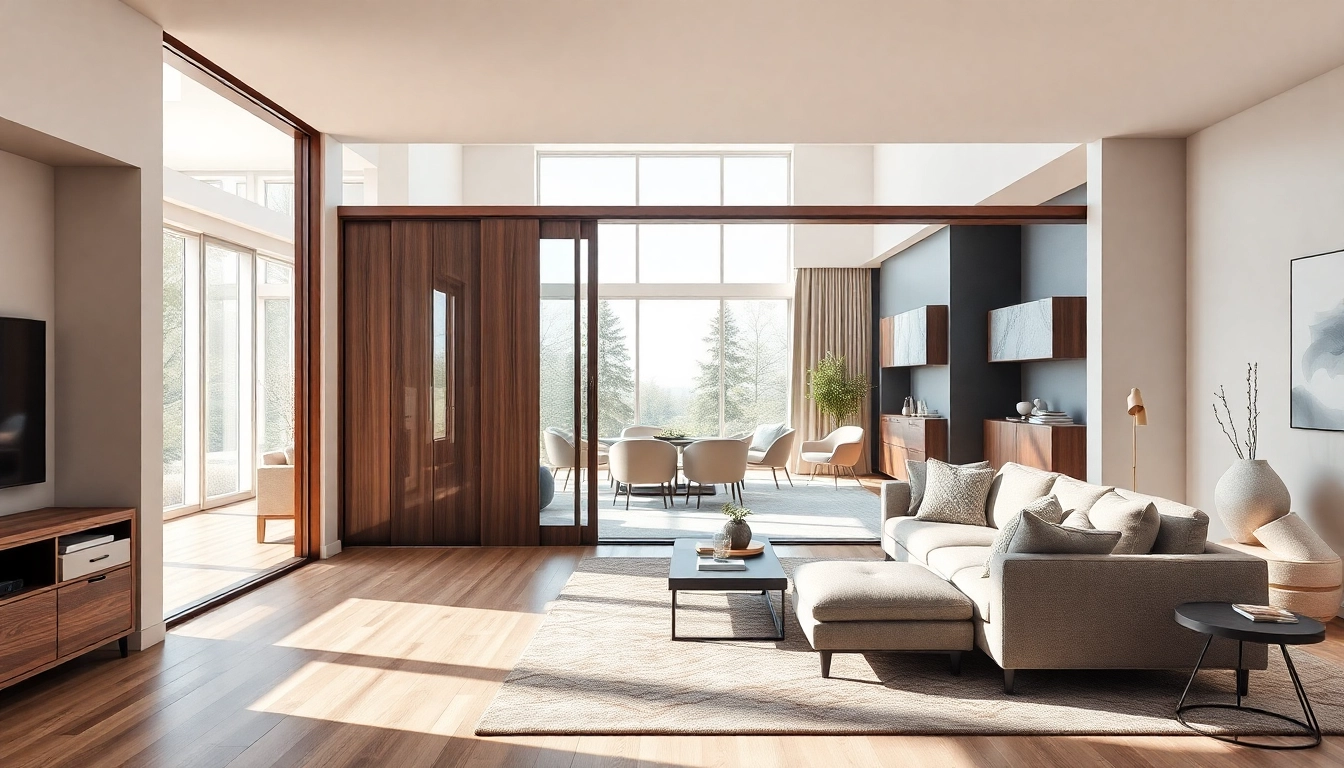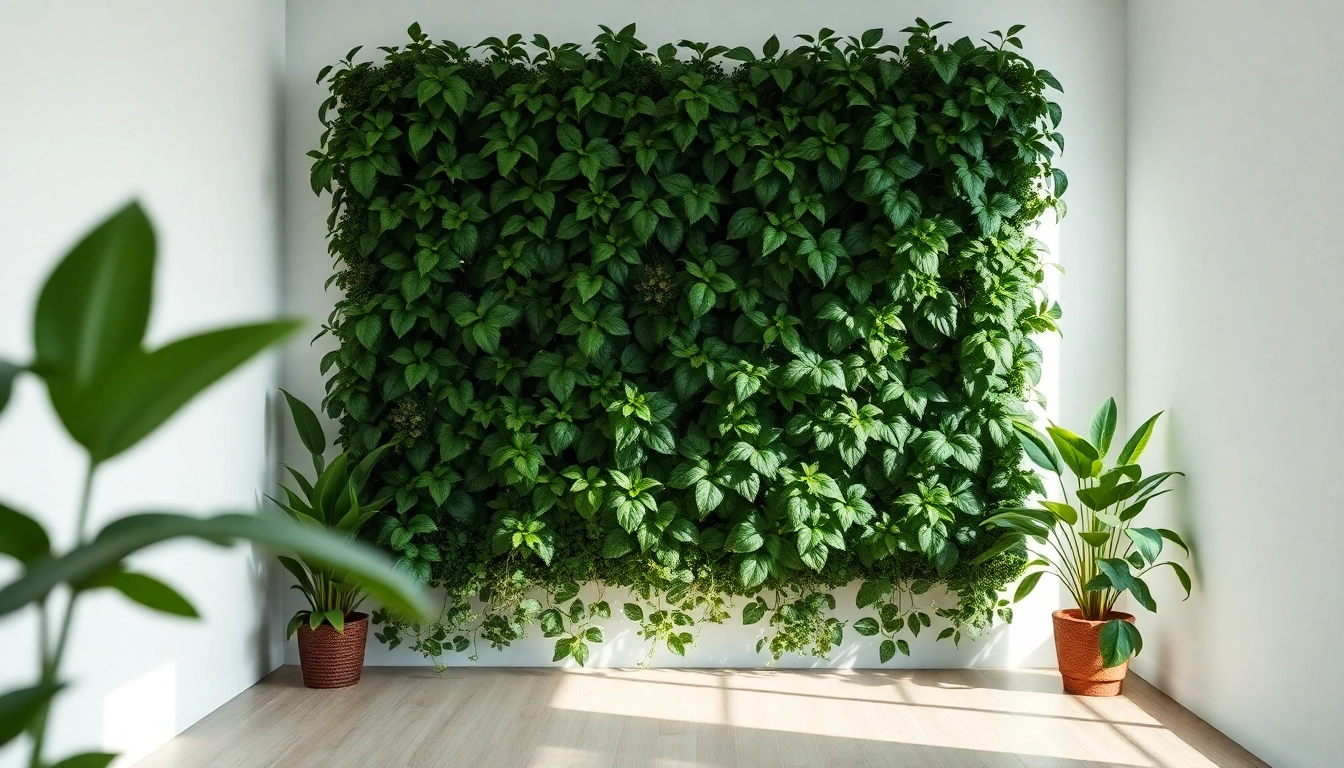Understanding Sliding Partition Walls
What is a Sliding Partition Wall?
A sliding partition wall is a versatile architectural solution designed to create flexible room layouts by allowing spaces to be opened or closed off as needed. Typically mounted on tracks, these partitions can smoothly glide to transform the functionality of a space, offering privacy and acoustic separation without the permanence of traditional walls. They are increasingly popular in residential settings, commercial spaces, and event venues due to their adaptability and aesthetic appeal. A sliding partition wall can consist of various materials, including glass, wood, and fabric, making them suitable for diverse design preferences and functional requirements.
Benefits of Using Sliding Partition Walls
The advantages of incorporating sliding partition walls into a space are numerous:
- Flexibility: They give you the ability to change the configuration of a room quickly. Whether you need an open concept for gatherings or divided spaces for privacy, sliding partitions can adapt as needed.
- Space Efficiency: By utilizing vertical space, these systems can eliminate the need for cumbersome furniture or traditional dividing walls, which often occupy valuable square footage.
- Cost-effectiveness: Installing sliding partitions can be a more economical choice compared to building permanent walls. Their installation is generally less labor-intensive, reduces construction costs, and facilitates future renovations.
- Improved Acoustics: Depending on the materials used, sliding walls can enhance sound insulation, making them a great option for open offices or multi-purpose spaces.
- Aesthetic Appeal: Available in diverse styles and finishes, sliding partition walls can complement any interior design and enhance the overall decor.
Common Applications of Sliding Partition Walls
Sliding partition walls are employed across various environments, including:
- Residential Spaces: Homeowners utilize these walls to create multifunctional areas, such as separating a living room from a dining room or a home office from the main living area.
- Commercial Settings: Offices frequently use sliding partitions to foster collaboration while also providing quiet spaces for focused work. They can also adapt conference rooms and shared spaces.
- Events and Venues: In event spaces, sliding walls allow for the quick division of large halls into smaller areas for workshops or breakout sessions.
- Educational Institutions: Classrooms can benefit from sliding partitions by allowing for adaptable learning environments that cater to different class sizes and teaching styles.
Design Options for Sliding Partition Walls
Materials and Styles Available
When it comes to sliding partition walls, a plethora of design options are available, allowing you to select the right combination of materials and aesthetic appeal to match your space:
- Glass: Glass sliding partitions are popular in modern office designs for their transparency that maintains an open feel while providing visual separation. They can be clear, frosted, or tinted for varying levels of privacy.
- Wood: Wooden sliding walls impart warmth and texture to a space, available in various finishes and grains. They can be solid for complete privacy or cutouts for a decorative touch.
- Fabric: Fabric partitions can offer a softer look and are often used in residential spaces. They can be made of curtains or upholstered panels, providing flexibility and an inviting atmosphere.
- Metal: Metal-framed sliding wall systems add an industrial aesthetic and are durable, making them suitable for high-traffic areas.
Customizing Your Sliding Partition Wall
Customization options for sliding partition walls can include:
- Size Variability: Sliding walls can be made to any height or width to fit your space requirements. Whether you need a low partition for visual separation or a full-height wall, manufacturers can tailor it to your needs.
- Track Systems: The type of track (ceiling-mounted vs. wall-mounted) can significantly affect the partition’s aesthetics and functionality. Choose between a streamlined track for modern looks or a decorative track for a more ornate feel.
- Finishes: The finish can be customized to fit your interior’s color palette and design language, such as powder-coated frames for a vibrant look or natural wood finishes for warmth.
- Integrating Technology: Some modern sliding partitions can integrate smart technology for remote operation, beneficial in commercial settings where frequent adjustments are needed.
Color Trends and Aesthetics
The aesthetics of sliding partition walls have evolved, reflecting current design trends:
- Neutral Colors: Shades of gray, beige, and other neutral tones remain popular choices, as they can blend seamlessly into various spaces.
- Bold Hues: Bright colors like deep blues, greens, or vibrant oranges can make a statement and energize a space, particularly in creative environments.
- Textured Finishes: Incorporating textures, such as wood grain or fabric upholstery, adds depth and interest to sliding walls, making them focal points in a room.
- Patterns and Graphics: Custom designs, including geometric patterns or images, can create unique visual interest, especially in settings aimed at inspiring creativity.
Sliding Partition Wall Installation Guide
Pre-Installation Considerations
Before installation, several factors must be assessed to ensure a seamless process:
- Space Evaluation: Measure the area where the partition will be installed. Ensure that there is enough room for the wall to slide without obstruction.
- Weight Support: Consider the weight of the partition material and the structural support of the overhead tracks. If mounting on a wall, ensure that it can handle the load.
- Accessibility: Identify whether the sliding wall will open to a frequently used area and plan its placement accordingly for easy access.
- Track Type: Decide whether a ceiling or wall-mounted track system is appropriate, considering the installation process for each type.
Step-by-Step Installation Process
Installing a sliding partition wall generally follows these steps:
- Gather Materials: Ensure you have all required materials, including the partition panels, tracks, mounting hardware, and tools.
- Prepare the Area: Clear the installation area, removing any obstructions to achieve a clean workspace.
- Install Tracks: Depending on the chosen track system, mount the tracks securely to the ceiling or wall, ensuring they are level for smooth operation.
- Hang the Panels: Slide the partition panels onto the track, adjusting as necessary to ensure they roll smoothly.
- Final Adjustments: Check the alignment and functionality of the partition, making necessary adjustments for optimal performance.
Maintenance Tips for Longevity
To ensure the longevity and proper functioning of your sliding partition wall, consider these maintenance tips:
- Regular Cleaning: Keep the tracks free from dust and debris, which can impede the smooth operation of the sliding mechanism.
- Lubrication: Periodically lubricate the track and wheels with a silicone-based lubricant to maintain ease of movement.
- Visual Inspections: Regularly inspect for any warping, damage, or structural issues that may arise, addressing them promptly to avoid further complications.
- Professional Servicing: For any complex issues, consider hiring a professional to ensure that repairs or adjustments are executed correctly.
Comparing Sliding Partition Walls with Other Options
Sliding vs. Folding Partition Walls
Both sliding and folding partition walls serve similar purposes; however, they differ in design and functionality:
- Space Utilization: Sliding walls slide into a compact position, allowing for more extensive openings compared to folding partitions that necessitate extra space when in use.
- Accessibility: Sliding systems can be quicker and easier to operate, particularly in high-traffic areas, while folding options often require more manual handling.
- Aesthetics: Sliding partitions often have a more modern look, while folding ones can resemble traditional doors, appealing to different design preferences.
- Installation Complexity: Sliding walls might require more precise installation to avoid operational issues, whereas folding partitions can be simpler to set up.
Cost Analysis of Sliding Partition Walls
The cost of installing sliding partition walls can vary significantly based on factors such as:
- Material Choice: Glass or high-quality wood may incur higher costs compared to fabric or lighter materials.
- Size and Customization: Non-standard sizes and customized features typically raise the price.
- Installation Complexity: Professional installation will add to the overall cost, particularly for intricate designs.
- Long-term Value: Though the initial investment may be higher, the flexibility and added functionality of sliding walls can lead to cost savings over time.
Durability and Performance Comparisons
When evaluating durability and performance:
- Material Strength: Wood and high-density glass partitions typically offer excellent durability, while lower-grade materials may not withstand wear and tear.
- Operational Features: Choose high-quality track and roller systems to ensure longevity and reliable performance in high-use scenarios.
- Maintenance Requirements: Different materials come with varying maintenance needs. For example, glass might require more cleaning compared to fabric, which may simply need to be vacuumed.
Real-life Examples and Case Studies
Residential Use Cases for Sliding Partition Walls
In residential settings, sliding partitions are embraced for their adaptability:
- Small Apartments: In compact living spaces, sliding walls can divide a living room from a bedroom, allowing for flexible use without overwhelming the space.
- Multi-functional Rooms: Homeowners use these partitions to create zones within large areas, such as separating a gym from an entertainment area.
Commercial Applications of Sliding Partitions
In commercial zones, the functionality of sliding partition walls can greatly enhance workflow:
- Open Offices: Companies are using sliding partitions to create spaces that can transform quickly, accommodating team sizes that fluctuate throughout the day.
- Restaurants: Sliding walls can create private dining areas for parties, enhancing customer experience while maximizing available space.
User Feedback and Success Stories
Successful implementations often highlight user satisfaction:
- Enhanced Collaboration: Office managers report improved teamwork and communication with the introduction of flexible meeting rooms.
- Aesthetic Improvements: Homeowners frequently share their delight in how sliding partitions transformed their interior look while providing utility.



